PIXEL CLOUD ENVELOPE ANALYSIS
Continuing with the main concepts that define “Pixel Cloud”, the envelope is based on an easily mounted structure composed by simple materials with both low carbon and environmental impact, maintaining a good thermal response as well. From the core, through the structure and further to the outer layers, the mounting logic generates the modulation and fixation patterns, trying to optimize as much as possible the use of “high impact” materials such as metal.
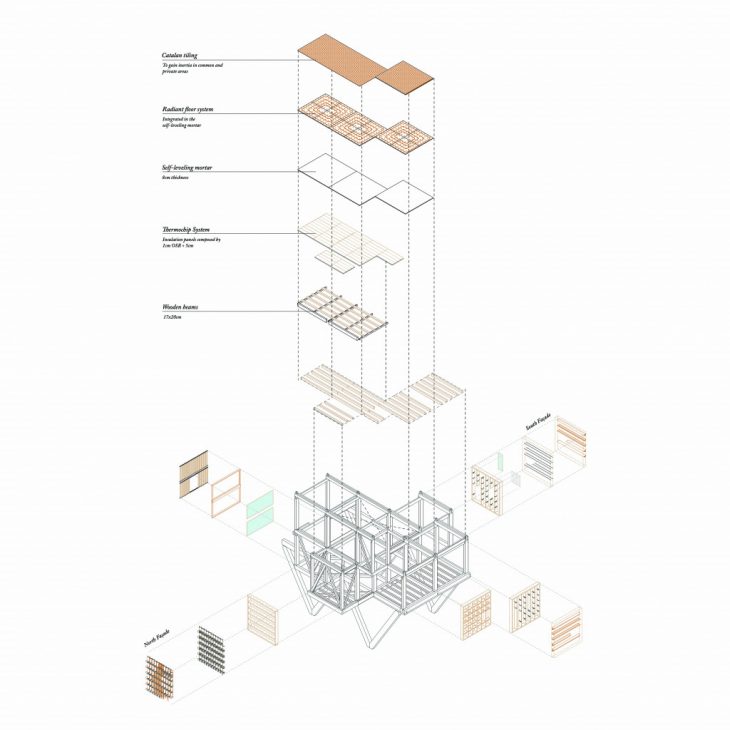
In this way, the mixed use of wood and ceramic was considered, playing with both the pre-existing material of the structure for the first one and the thermal inertia in the case of the second. Being them based on both abundant and low impact primary sources, the overall footprint of the building is reduced. The use of these materials in a “low-tech” way helps to change positively the CO2 and environmental footprint, without having to sacrifice the aesthetics on the way.

With a thorough research done based in different built examples, the final idea relies on the generation of a comfortable and energy-efficient environment, with a clear resemblance to a small domestic scale then magnified to a bigger one. Concepts such as “buffer or transition area” as well as “responsiveness” are essential for our envelope system. In this way, different strategies where defined depending on the orientation of each facade, offering the building a really good adaptability.
In order to obtain a standarized system that would work for the entire facade system, a ceramic extrusion pattern was designed. Using the same mould, the pattern varies depending on the kind of facade system, which relates directly to the particular sun and wind incidence. The ceramic extruded piece fixes to a main structural frame with wood pipes. These pipes pass through the entire ceramic pieces, all the way until the frame, piece which they penetrate into.
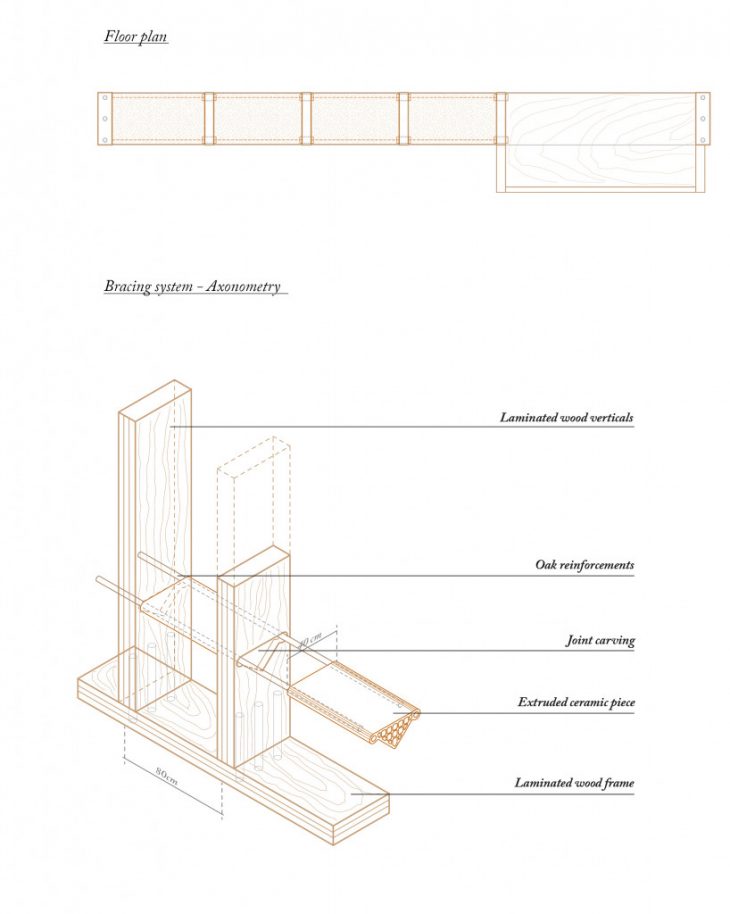
If we observe the South Facade, the extrusion acquires two main shapes, one with a pot usage and the other as a solar shading element. For both cases, the horizontal placing helps to obtain an optimal shading for this kind of solar incidence, letting the winter sun in, while blocking the summer one out. Additionally, the green system is supposed to be deciduous, so the sun blockage and heat dissipation in summer is optimized.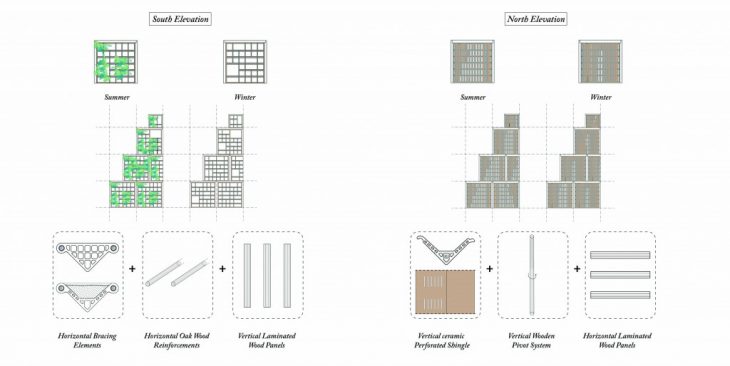
In the case of the North Facade, the idea is to capture the fresh winds of the summer, while completely blocking them on winter. In order to obtain these results, the “shingle” changes its shape in order to work in a vertical position, fixing its core to a wooden pipe which allows this to rotate freely. Each ceramic piece, locks with the next one in a succesive way in order to obtain an optimal air tightness.
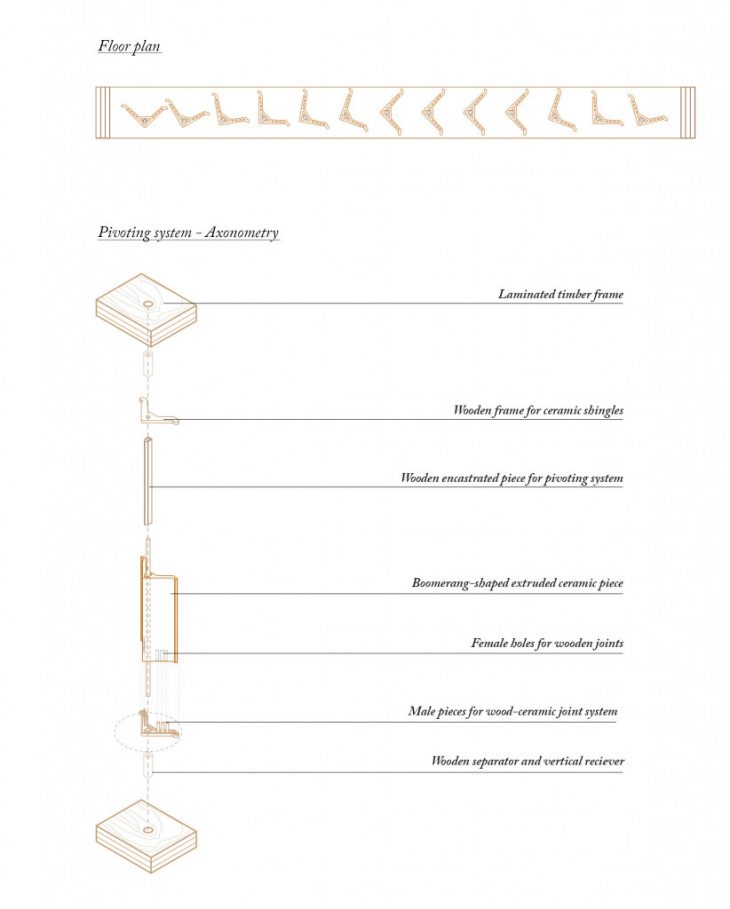
Both the North and the South systems can adapt to the West and East facades simultaneously (the last mentioned before). In the case of the West facade, the ceramic “shingles” offer a vertical shading system with their morphology, as well as an excellent thermal behaviour because of its material.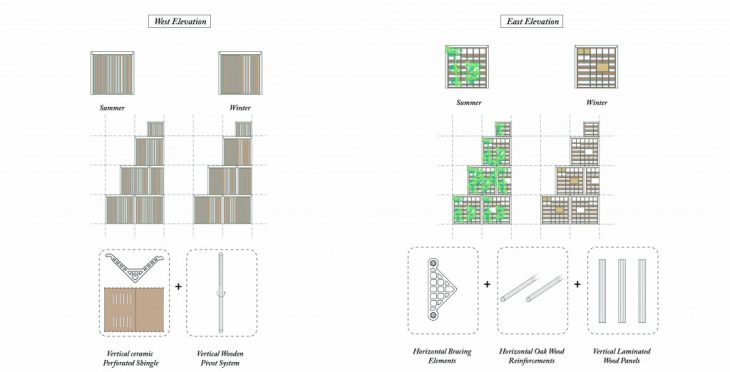
The envelope dialogues with the indoor space by extending the modulation logics appreciated on the outside. In this way, the outer layer is not just an auxiliary addition to the building, but also a main constitutive part of it.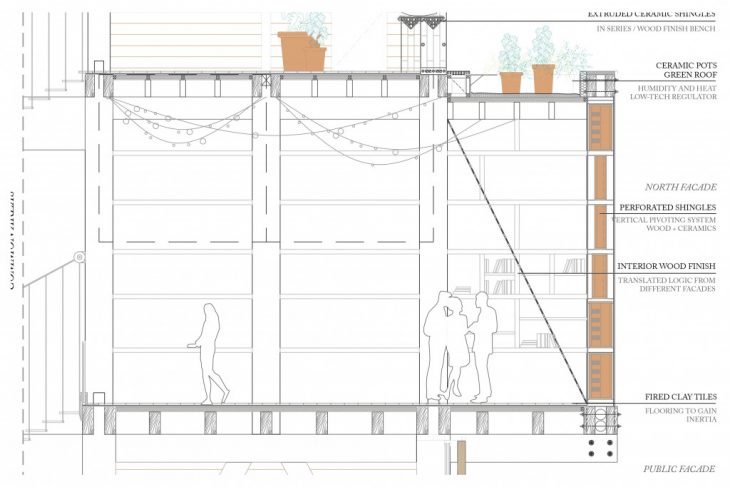
Pixel Cloud Envelope analysis is a project of IaaC, Institute for Advanced Architecture of Catalonia, developed at Master in Advanced Ecological Building and Biocity 2019/20 by:
Irene Rodríguez and Juan Secondo
Faculty: Miquel Rodriguez